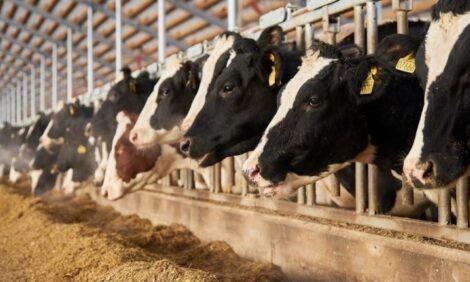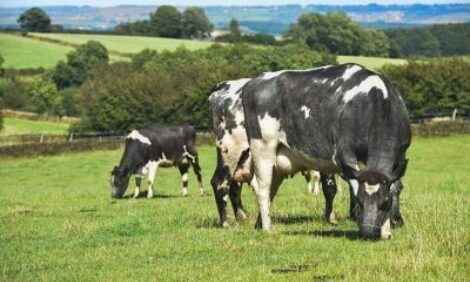



Beef Production From The Dairy Herd
At a recent dairy calf to beef conference in Ireland, Padraig French from Teagasc, Animal and Grassland Research and Innovation Centre, looked at current trends in beef production from the dairy herd.Introduction
From the introduction of quotas in 1984 until 2007, approximately 55 per cent of all dairy cows were bred to beef bulls with the remainder bred to dairy sires to generate replacements for the dairy herd. Currently, approximately 60 per cent of dairy cows are bred to dairy bulls with the remainder to beef bulls of Angus (14 per cent) Hereford (11 per cent), Limousin (6 per cent) and other continental (5 per cent) breeds. The increased use of dairy sires on dairy herds will lead to an increase in the national dairy cow population of 3-4 per cent / annum from 2011 and in addition to realising a national dairy herd size of over 1.35 million dairy cows by 2020 (Table 1), will also result in a substantial increase in the number of male calves from the dairy herd. While milk quotas were in place, dairy farmers reared bull calves as a means of increasing gross output of the dairy herd, however, it is anticipated that post quotas, dairy production will become more specialised and fewer dairy farmers will rear calves for beef production leading to a very significant increase in the number of male dairy bred calves coming on the livestock market.
Table 1. Male dairy calf and dairy cow numbers from 2006 to 2010 and projected to 2020 based on current replacement rates
| Year | Male Dairy Calves | Dairy Cows |
|---|---|---|
| 2006 | 254,209 | 1,038,520 |
| 2007 | 264,911 | 1,038,531 |
| 2008 | 279,096 | 1,032,432 |
| 2009 | 319,249 | 1,016,875 |
| 2010 | 315,311 | 1,017,131 |
| Projected | ||
| 2011 | 326,946 | 1,054,664 |
| 2012 | 334,479 | 1,078,964 |
| 2013 | 343,445 | 1,107,888 |
| 2014 | 352,297 | 1,136,442 |
| 2015 | 361,476 | 1,166,053 |
| 2016 | 370,867 | 1,196,346 |
| 2017 | 380,510 | 1,227,451 |
| 2018 | 390,401 | 1,259,357 |
| 2019 | 400,549 | 1,292,095 |
| 2020 | 410,962 | 1,325,684 |
Live Exports
Over the last few years there has been a very significant increase in the number of male dairy calves going for live export for veal production in continental Europe with over 160,000 likely to go in 2010, or over half of the total number of males born. These calves are currently leaving the country at relatively low value to the agricultural sector or the economy as a whole. The ‘Food Harvest 2020’ document sets a target of increasing the value of beef exports by 20 per cent or approximately €300 million over the next ten years. If the calves that are currently exported live were reared to beef in a bull beef system, it would add an estimated €120 million to the value of agricultural exports. The realisation of this scenario requires that all participants, including farmers who rear dairy calves to beef, can realise sustainable returns to justify their effort and investment in rearing.
The objectives of this new joint programme between Teagasc and Dawn Meats are to integrate the calf to beef production system with product marketing and, therefore, develop systems of production that are efficient and profitable for the producer and produce a product that is marketable by the processor.
Seasonality
Milk production in Ireland is highly seasonal to maximise the economic efficiency of grass based production and consequently, over 80 per cent of the dairy cows are calved at the start of the grass growing season (Figure 1) with a peak in February and most of the calving completed by mid-April. In a non- quota environment, the optimum calving date for a grass based production systems is approximately two weeks earlier than in a quota regime. Since the introduction of the Economic Breeding Index (EBI), dairy farmers have begun to breed for cows with superior fertility and this allow much better control over the mean calving date of the herd in future.
Additionally, as the dairy industry expands, increased pressure on processing capacity will result in seasonality bonuses to motivate farmers to move to earlier calving. It is therefore, anticipated that there will be a national move to earlier calving with an increased proportion of calvings in January and February and less in April and May resulting in increased seasonality of male dairy calf supply. As the market requires a relatively uniform supply of fresh beef, it is likely that a range of systems of production must be developed which may be suited to different farmers depending on farm circumstances and resources.
Figure 1. Seasonality profile of male dairy calf births

Calf Rearing
On most dairy farms, because of the seasonality of production, there is a significant demand for labour in spring as the work loads of calving cows, milking start-up and calf rearing coincides. For this reason, many dairy farmers, particularly those with bigger herds, try to sell the non dairy replacements as young as possible to reduce the workload and to concentrate their efforts and resources on the dairy heifer calves. This trend towards more young male dairy calves being sold is likely to continue as dairy farmers expand milk production post-quotas. As there are very few farmers willing to buy these calves and invest the time and resources required to successfully rear them, the majority are exported live to continental Europe for veal production.
The skills required to successfully rear milk fed calves on Irish beef farmers is likely to be a limiting factor to the development of viable industry using beef calves from the dairy herd. In many other countries, such as Australia, New Zealand, the UK and the US, where significant dairy beef industries exit, this role is filled by specialised calf rearers. The development of specialised calf rearing enterprises has potential on many Irish dry stock farms that have adequate labour and usable facilities and a requirement for a more reliable income sources into the future.


